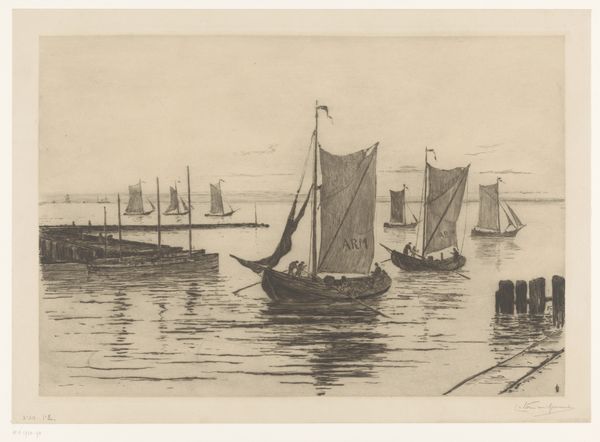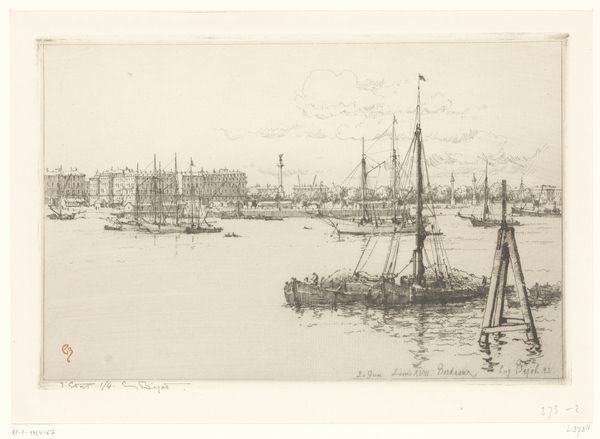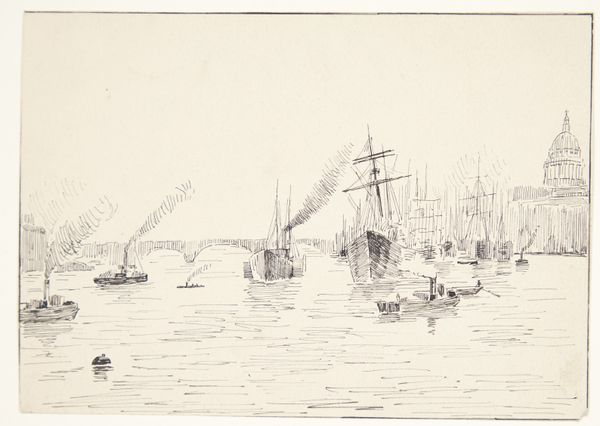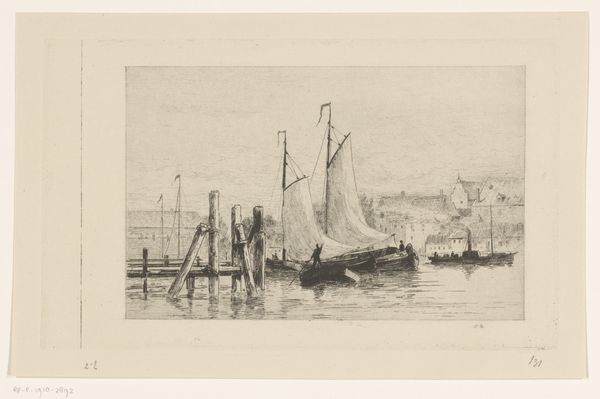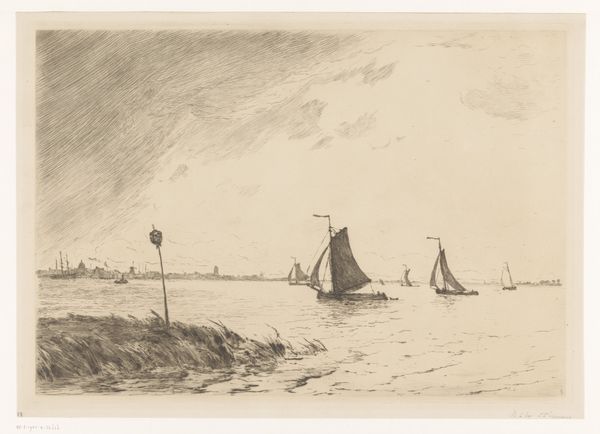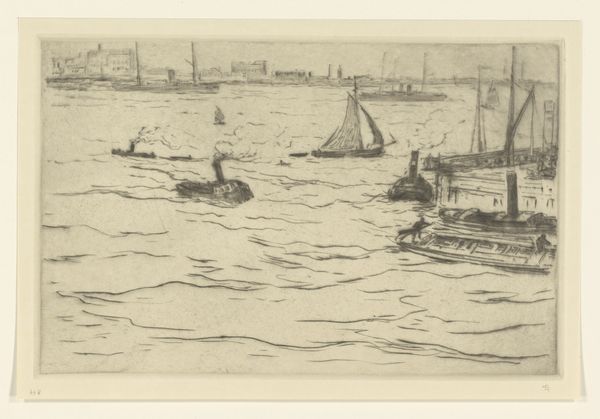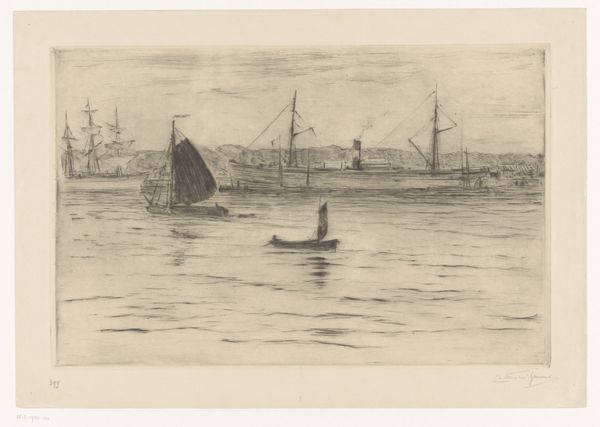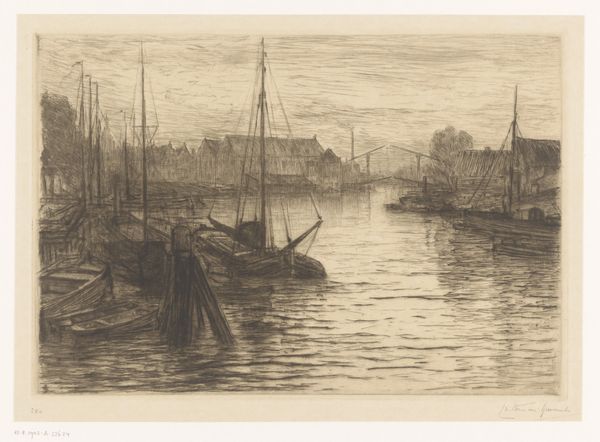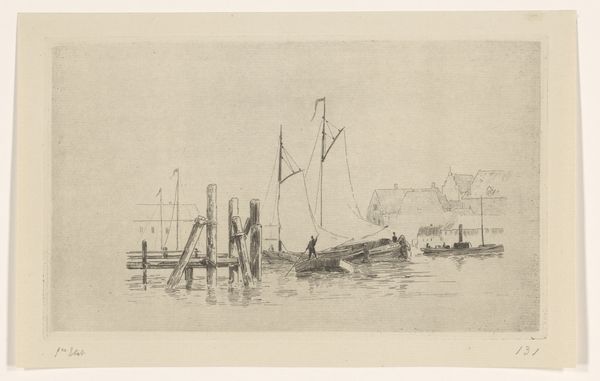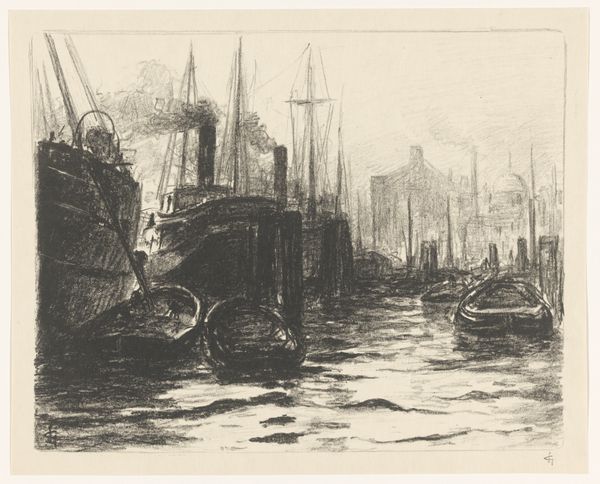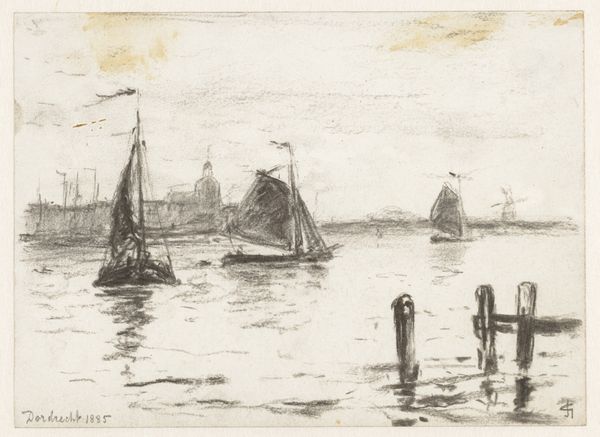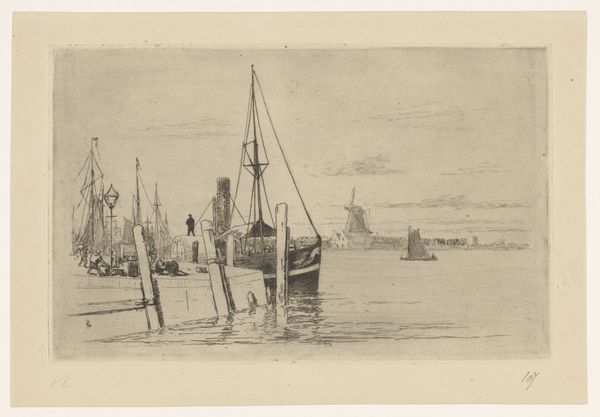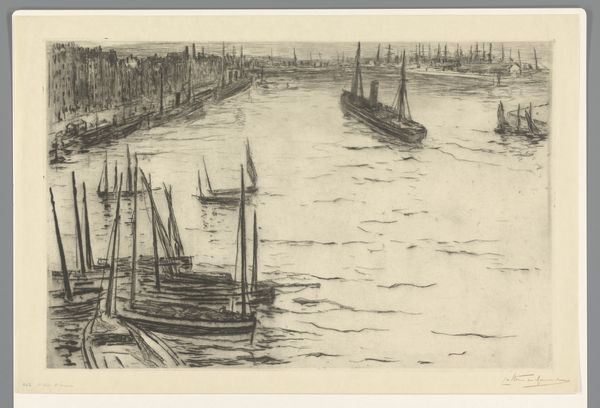
drawing, pencil
#
drawing
#
dutch-golden-age
#
pencil sketch
#
landscape
#
etching
#
pencil
#
cityscape
#
realism
Dimensions: height 272 mm, width 360 mm
Copyright: Rijks Museum: Open Domain
Editor: So, this drawing is titled "Vissershaven in Dordrecht" and was created by Carel Nicolaas Storm van 's-Gravesande sometime between 1851 and 1902. It's a pencil drawing, and I'm struck by its simplicity. It feels very direct, like a snapshot of everyday life. What catches your eye? Curator: What interests me is the materiality of this drawing in relation to its subject. The humble pencil, a readily available and inexpensive tool, is used to depict a working harbor. Notice how the artist captures the boats, not as romantic vessels, but as tools of labor, tied up, perhaps awaiting repair. Editor: I see what you mean. The boats aren’t idealized. They look like they're actually used, really worn, not at all glamorous. Curator: Exactly. The artist's choice of such a commonplace medium—pencil on paper—to depict this scene shifts our focus. It's less about artistic genius and more about the daily toil and materials related to the fishing industry. How does the landscape in the background relate to that, do you think? Editor: Well, the windmills seem to speak to the kind of pre-industrial or early-industrial labour, before mechanization. I mean, you can see people, tiny figures on the boats, physically working. Curator: Precisely! The artist is showing us a particular moment in time, a snapshot of the modes of production that are integral to this community. The pencil lines are faint, almost disappearing in the distance, like the industries represented. What might this say about a societal view of the means of their own living? Editor: That's a really interesting way to look at it. I hadn't considered the connection between the medium and the message like that. I suppose using a more elaborate or 'fine' medium could romanticize the work of the people who labored on that fishing harbor. Curator: Exactly. Thinking about art through the lens of its materials and the labor it represents opens up a new perspective on its social and economic context. Editor: I definitely learned to consider the choice of materials more actively now and to question how those choices shape our understanding of the subject itself.
Comments
No comments
Be the first to comment and join the conversation on the ultimate creative platform.
